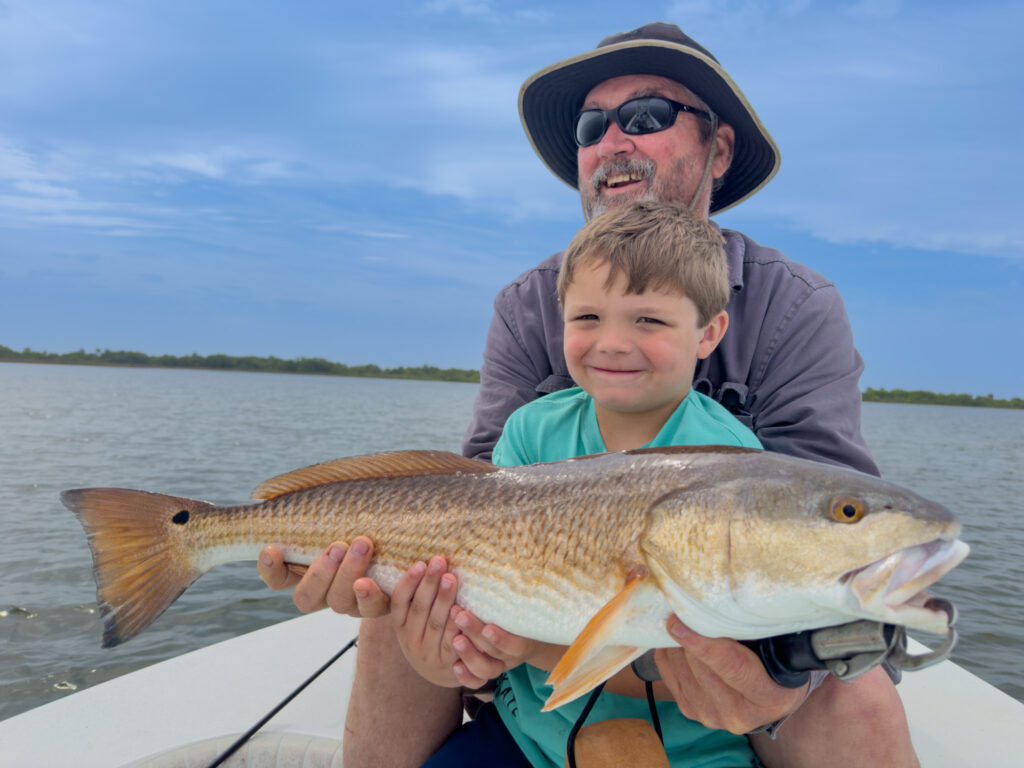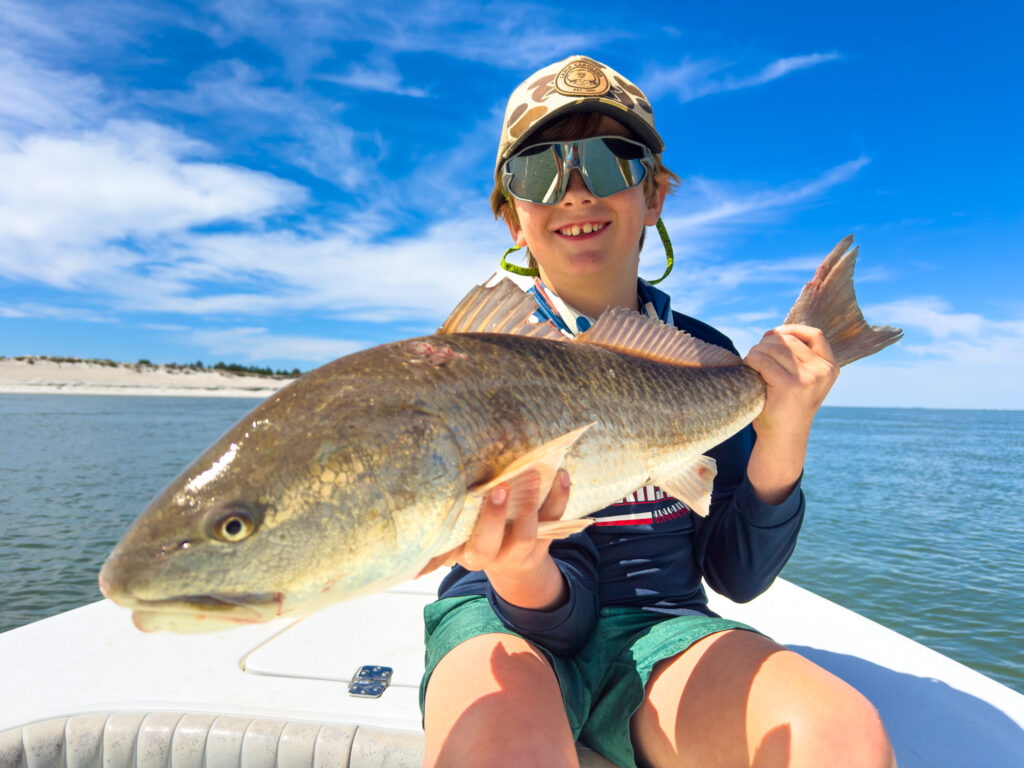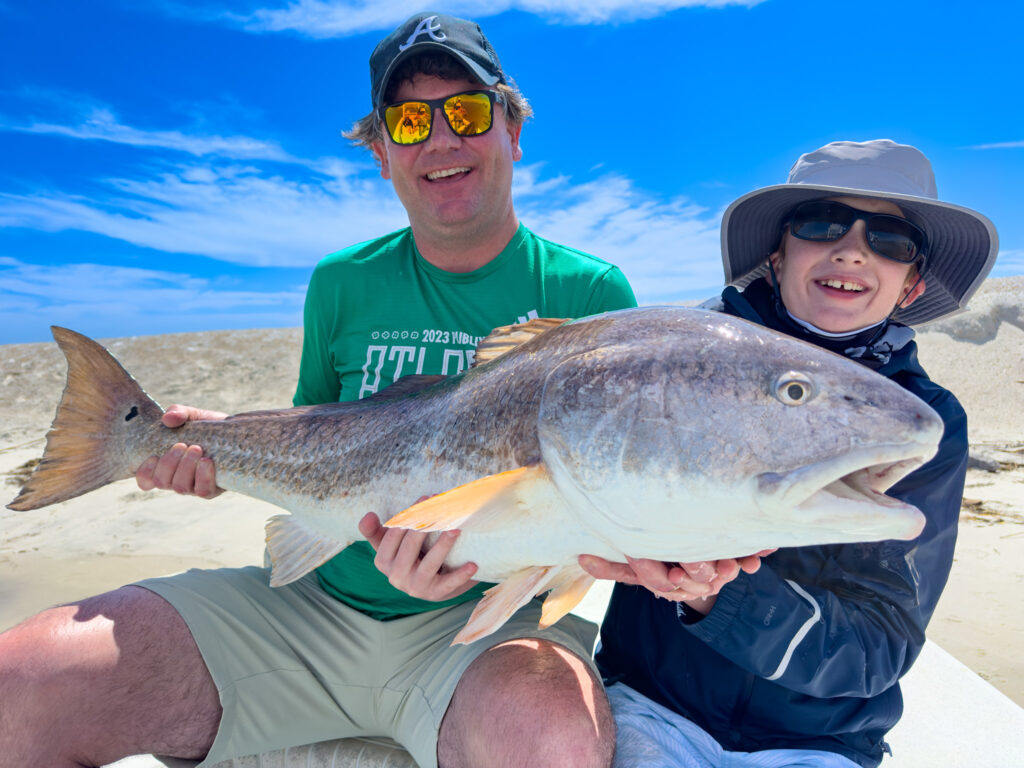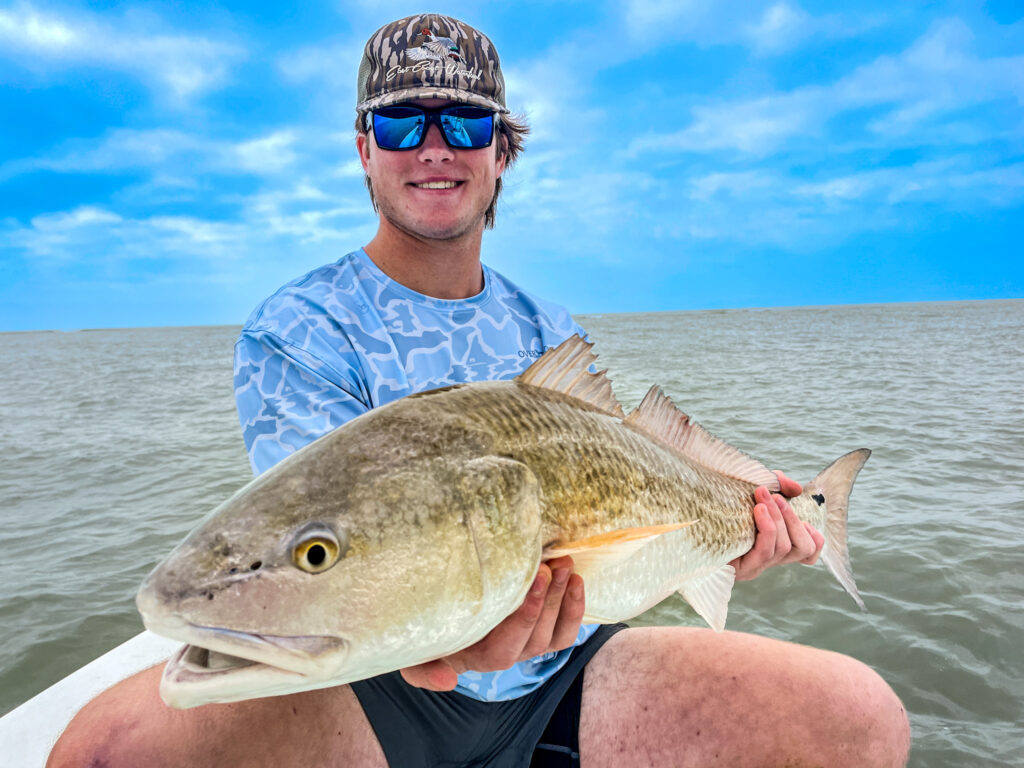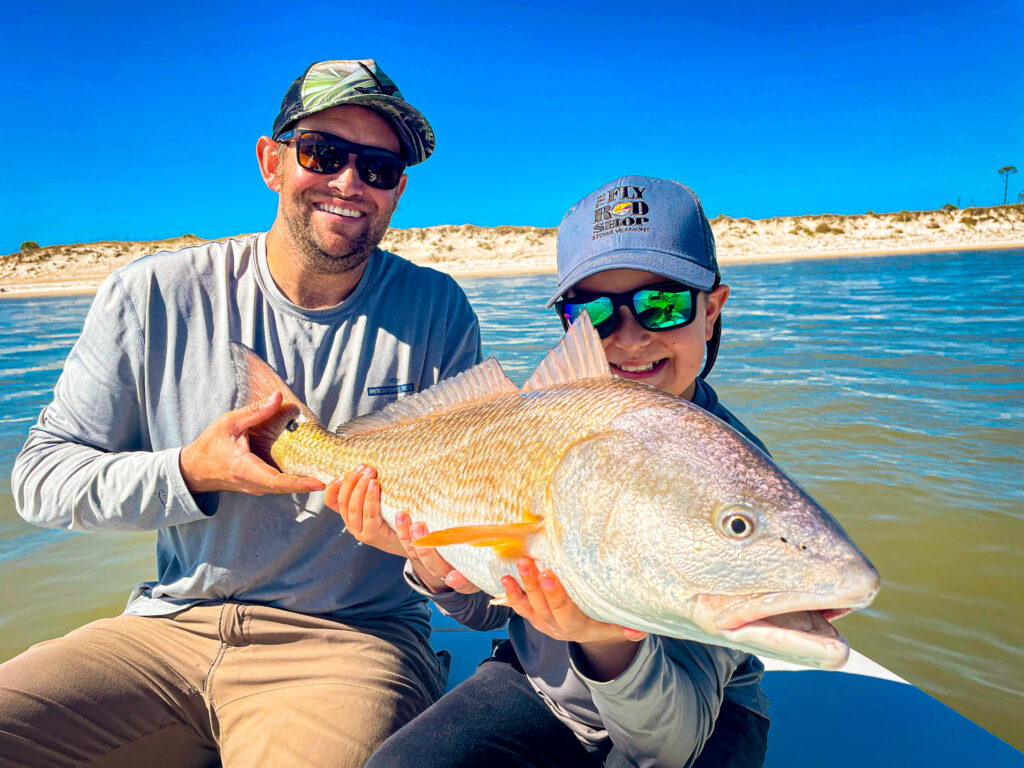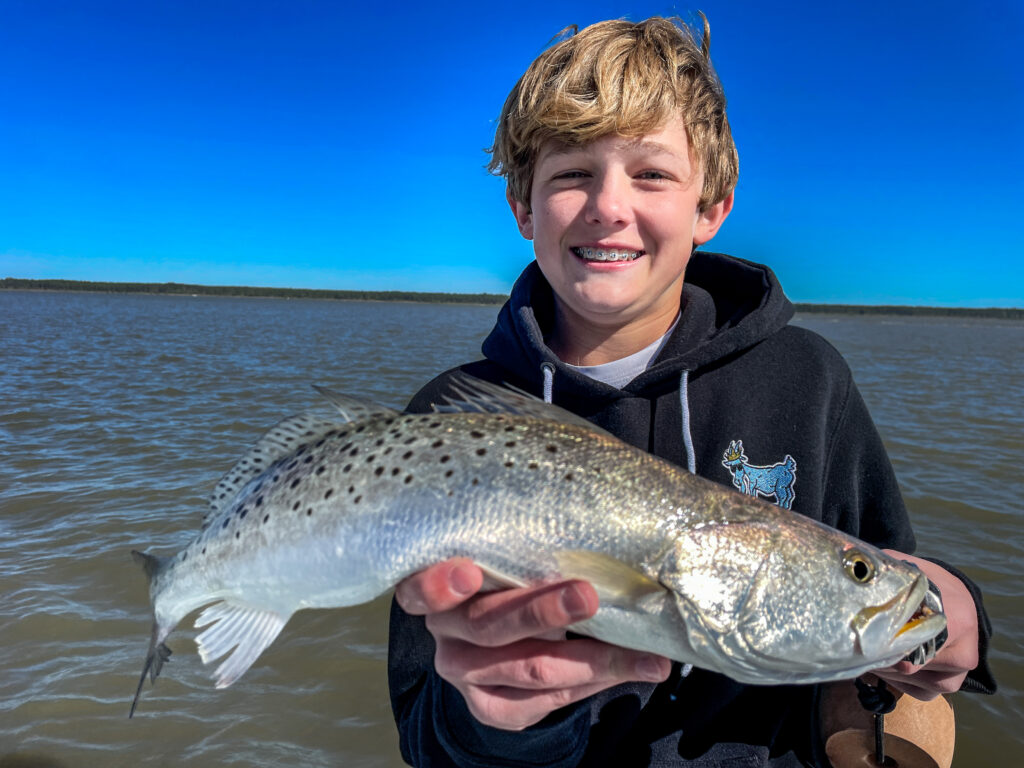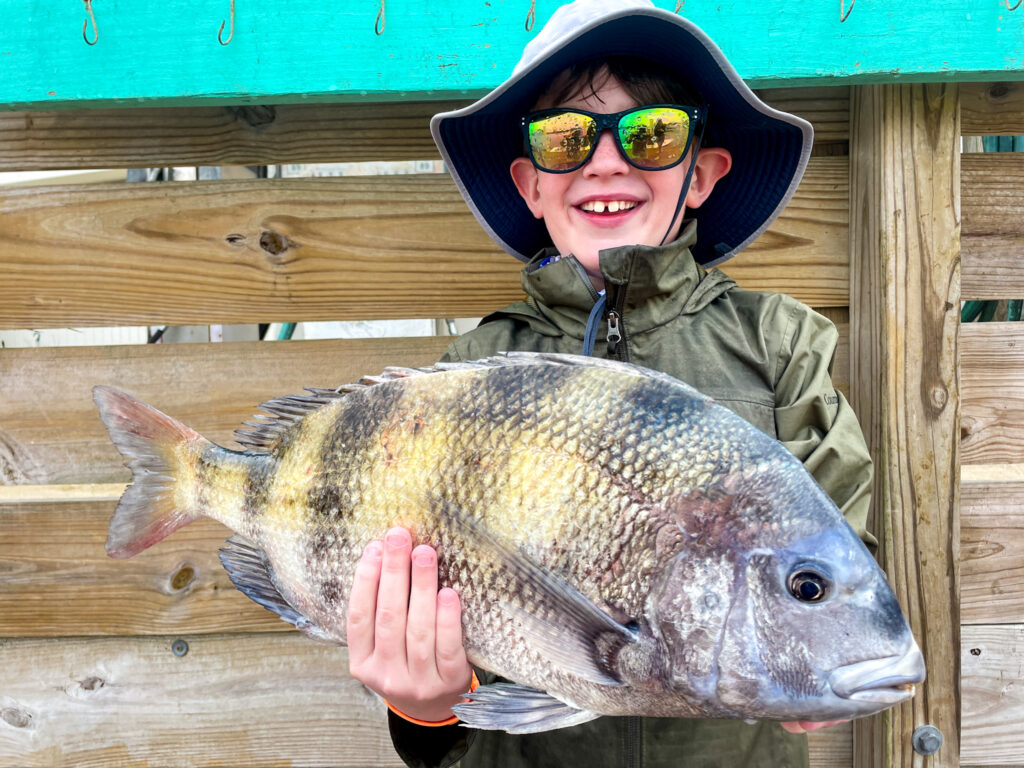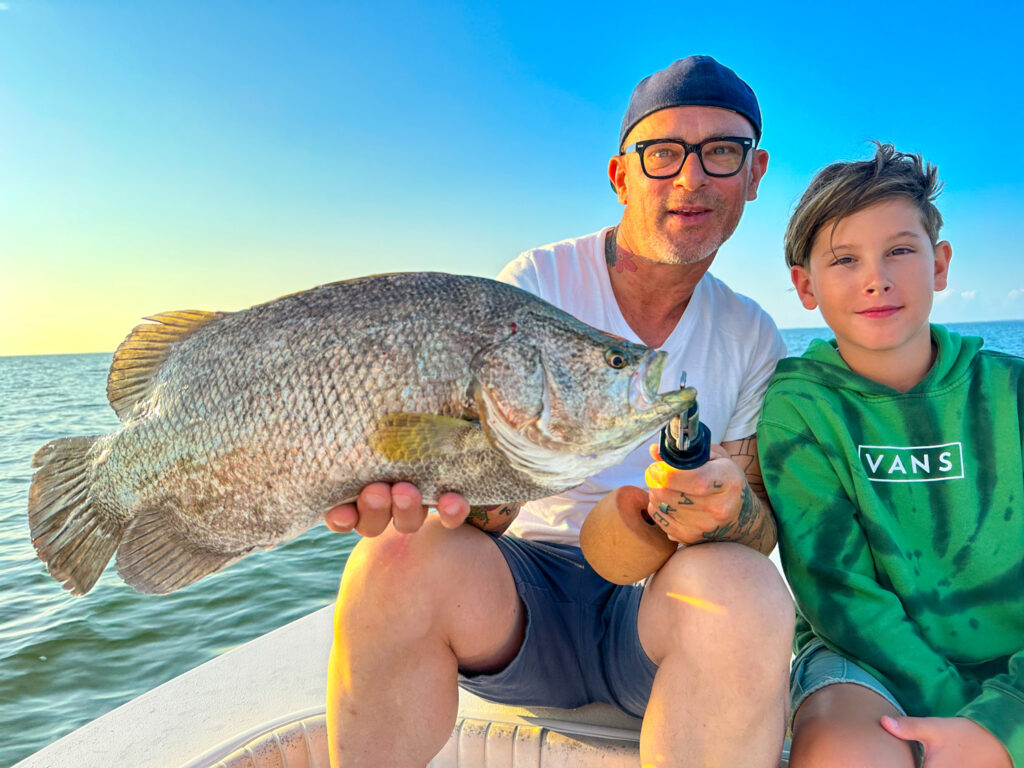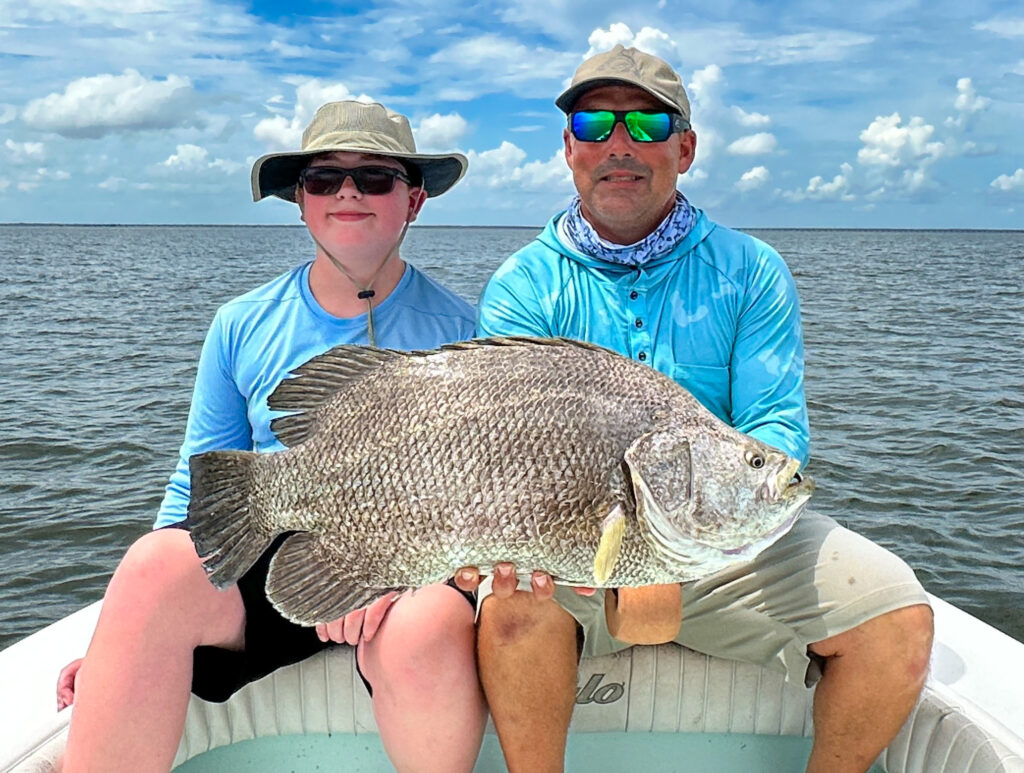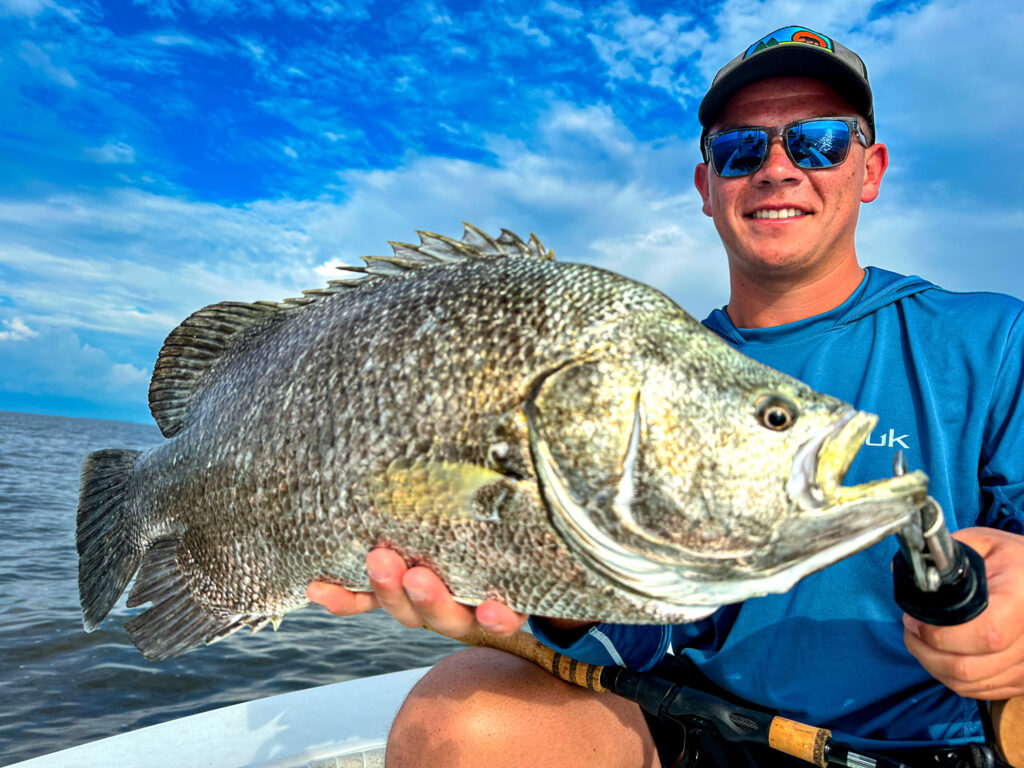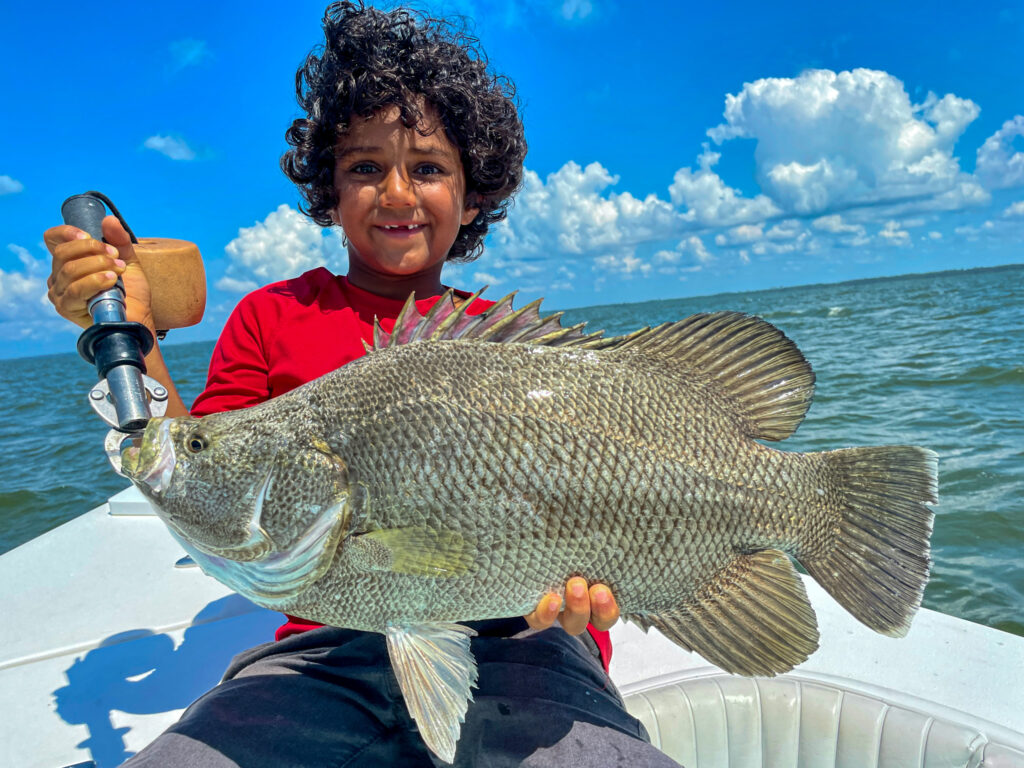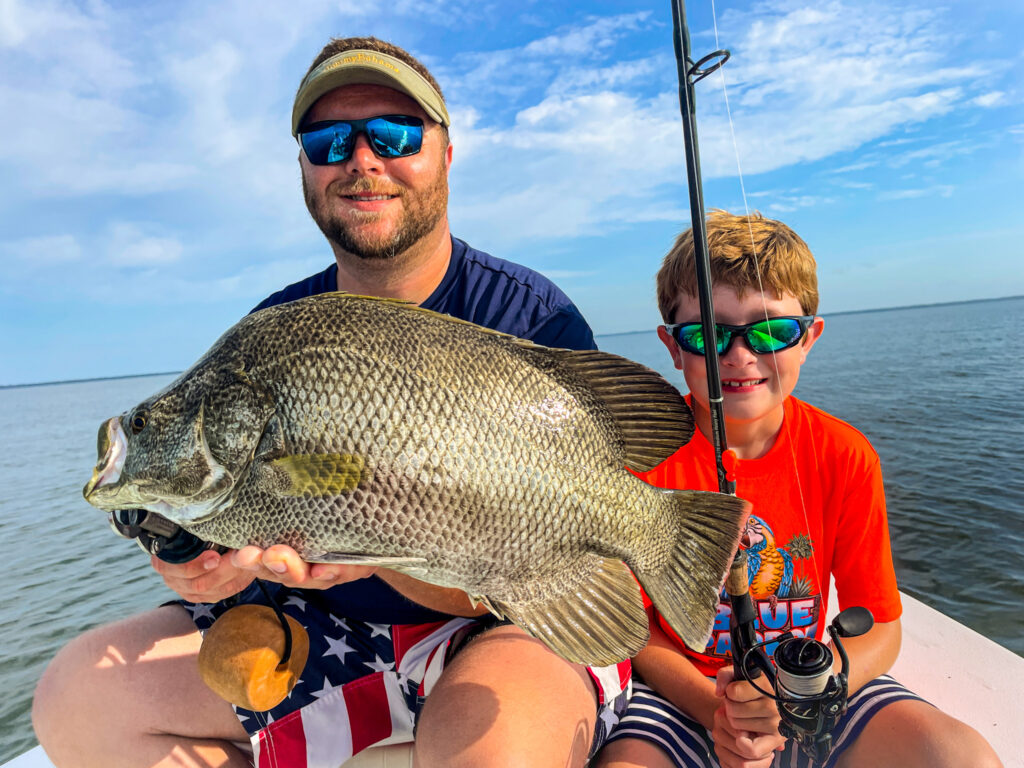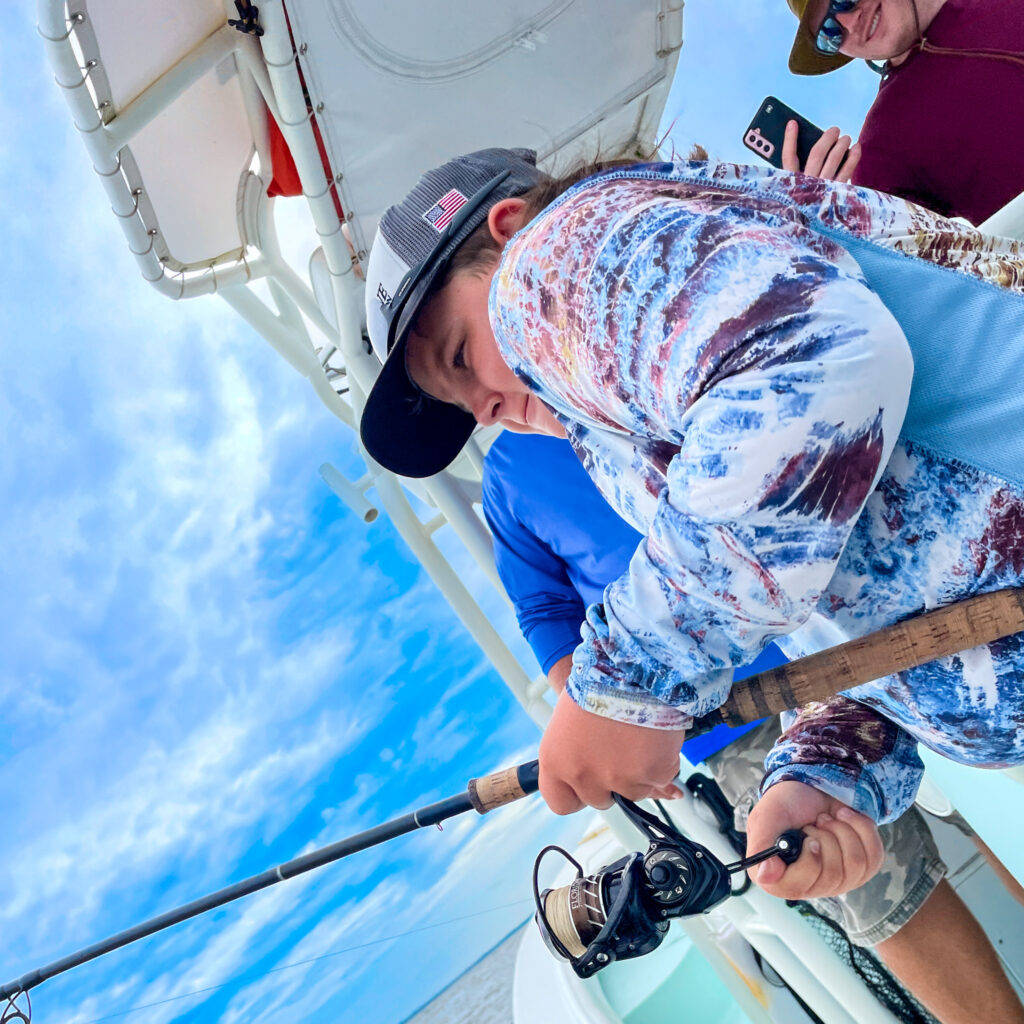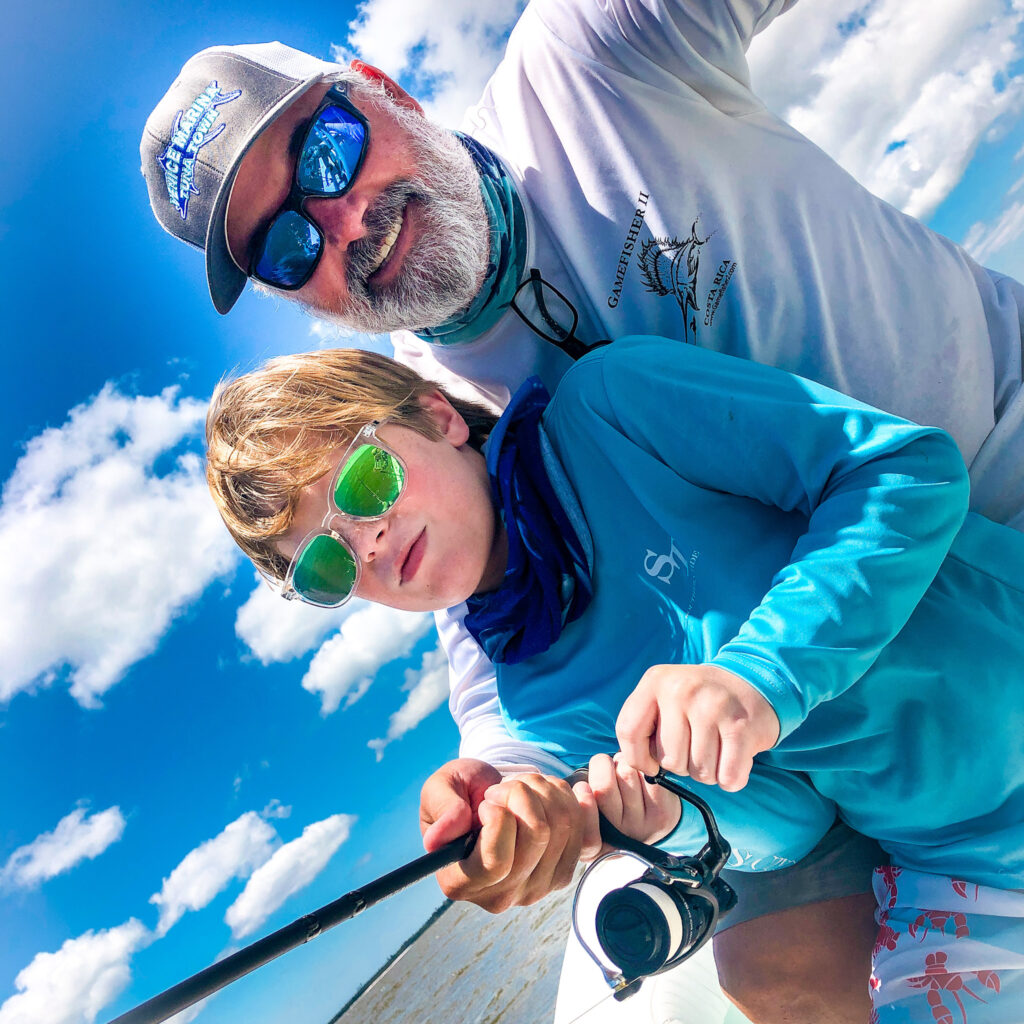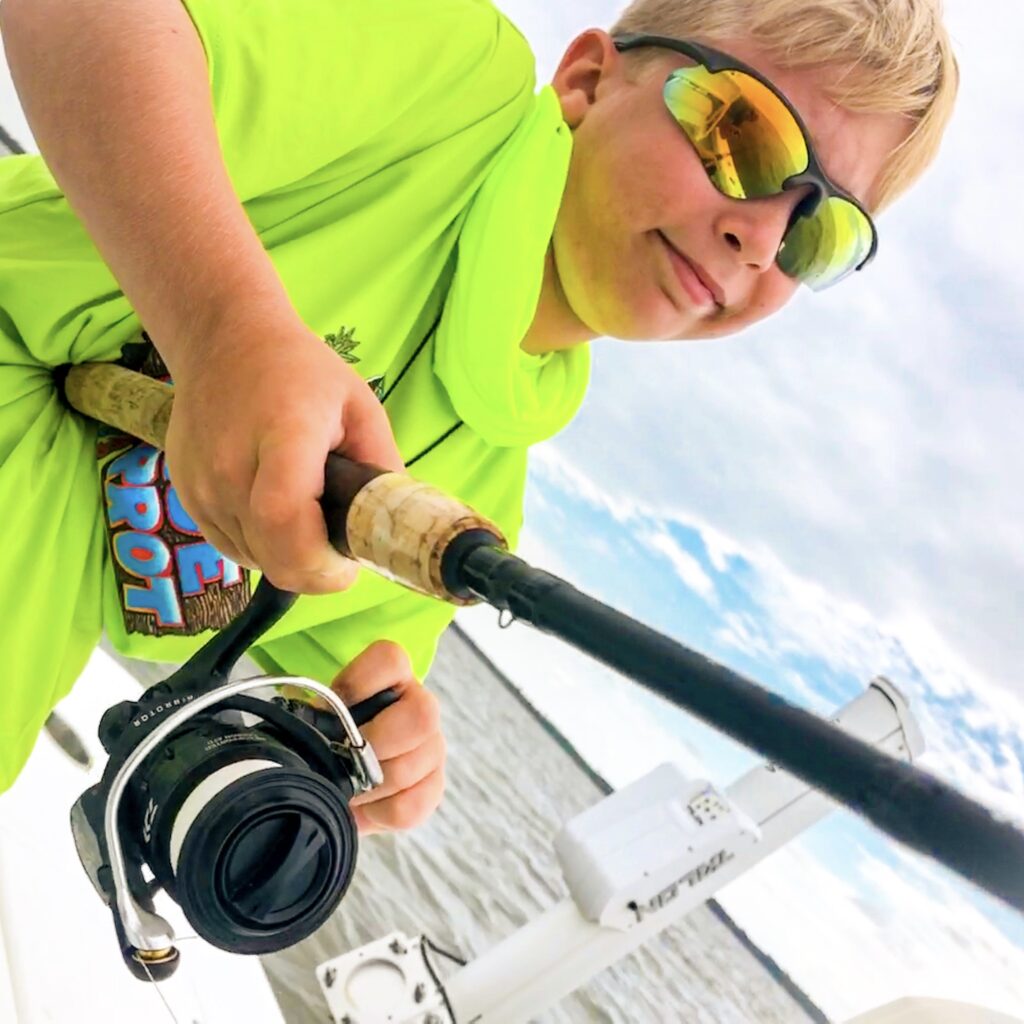Catch A Florida Memory
Catch A Florida Memory
Saltwater Reel Big Fish
The Saltwater Reel Big Fish program recognizes anglers for extraordinarily-sized catches of the 30 different saltwater species listed below. Fish must reach or exceed the qualifying length listed for Adult Division (age 16 and older) and Youth Division (age 15 and under). The catch will be photographed by Captain Davidson over a qualifying measuring device as well as in a photo with the angler who is applying for recognition. Southern Salinity & FWC encourage responsible angling on and off the water. Our anglers do not have to harvest their fish to be eligible. We focus on our youth anglers especially teaching them proper fishing & handling techniques. Captain Davidson will help qualifying anglers by submitting all pertinent information and required photos.
Southern Salinity’s successful anglers will receive a certificate signed by the Director of FWC Marine Fisheries Management and a colorful t-shirt in recognition of their achievement. Recipients will also be listed in the Saltwater Recreational Fishing Regulations booklet and on the Club Members page.”
Saltwater Grand Slams
The Grand Slams challenge anglers to catch three specified fish species during our Fishing Charters with Captain Davidson. The FWC updated the program by creating 9 different Grand Slams including a Small Fry Slam for children age 15 and under. Captain Davidson will help qualifying anglers by submitting all pertinent information and required photos.
Inshore Coastal Species:
Appearance:
Basic color dark brown or black; dorsal fin has rows and stripes of white on black; large males have iridescent blue and ebony markings, and fatty hump in front of dorsal fin; females may have indistinct vertical barrings; topmost ray of caudal fin much elongated in adults; caudal may be tri-lobed; sharp spine near posterior margin of gill cover.
Where Found:
Structure-loving fish, associated with reefs and rubble offshore; smaller specimens often found in inshore finger channels.
Behavior:
Spawns January through March; protogynous hermaphrodites, older females becoming breeding males; omnivorous bottom feeders, diet including small fish, crustaceans, and shellfish.
Additional Information:
Anglers commonly catch black sea bass incidentally while bottom fishing for grouper or snapper. While smaller than most other members of the family, black sea bass are aggressive and fun to catch, especially if you scale back to lighter tackle. Light to medium weight spinning or bait casting tackle with 10 to 20 pound test line is sufficient. At times (especially during the winter months) black sea bass are so hungry and aggressive that they will hold on to your lead all the way to the surface or the bottom of your cooler. Good baits for black sea bass include squid, shrimp or cut bait, or jigs tipped with squid. As a food fish, black sea bass are excellent and known for their firm white flesh and mild flavor.
Appearance:
Long, slim fish with broad depressed head; lower jaw projects past upper jaw; dark lateral stripe extends through eye to tail; first dorsal fin comprised of 7 to 9 free spines; when young, has conspicuous alternating black and white horizontal stripes.
Where Found:
Both inshore and nearshore inhabiting inlets, bays, and among mangroves; frequently seen around buoys, pilings, and wrecks.
Behavior:
They spawn in spring and early summer. Feeds on crabs, squid and small fishes.
Additional Information:
Fishing Tips and Facts: Live crabs and small fish are good baits for cobia. Keep bait near the surface or, if cobia is deeper adding just enough weight to get the bait down and still retain its movement. Medium to heavy tackle is required to land these fish which average 30 pounds. Large specimens in the 50-80-pound class are frequently caught and cherished by the lucky angler who outmatches these powerful fish. Cobia are excellent table fare.
Appearance:
Brown body color, with numerous spots and blotches. Three prominent dark, eyelike spots forming a triangle-shape (one spot on lateral line, one above and one below). Numerous white spots scattered throughout body and fins, belly is white or dusky, strong canine-like teeth and a wedge-shaped tail, its tip in the middle.
Where Found:
Inshore on sandy or mud bottoms, often ranging into tidal creeks; occasionally caught on nearshore rocky reefs.
Behavior:
Hatches into usual fish form, but right eye migrates over to left side early in life; a bottom dweller; thought to spawn offshore; feeds on crustaceans and small fishes.
Additional Information:
Anglers generally use light spinning tackle and often target flounder close to shoreline structure including stumps, dock piles, seawalls and bridge piles, which are good points of ambush. While flounder can be caught with a wide variety of natural or artificial baits, most anglers prefer to use live mud minnows, live finger mullet, live or frozen shrimp, cut bait or jigs.
Appearance:
Greenish gray on back, shading to silvery sides; fish in dark waters showing yellow on throat, pelvic, and anal fins; deep flattened body with small mouth; no scutes; 22 to 27 soft dorsal rays; 20 to 23 soft anal rays; origin of anal fin slightly behind origin of second dorsal.
Where Found:
Inshore and nearshore waters, especially along sandy beaches, oyster bars and over seagrass beds, often in turbid water. Found in water as deep as 130 feet.
Behavior:
Spawns offshore between March and September; feeds on mollusks and crustaceans, especially sand fleas; local movements are influenced by the tides, and seasonal movements are influenced by temperature.
Additional Information:
State Record: 8lb 4oz, caught near Port St. Joe
Appearance:
Dark brown or gray in color, with red-orange spots in bars along the sides. Two large canine teeth near front of upper jaw, Anchor-shaped vomerine tooth patch, Dorsal fins with dark or reddish borders. Young have dark stripe from snout, through eye, to upper edge of gill cover.
Where Found:
Coastal waters near structure such as reefs, mangroves and seagrass. Juveniles may enter freshwater.
Behavior:
Spawn June through August. Feeds on crustaceans and small fish.
Additional Information:
Gray snapper caught offshore are common 8 to 10 pounds.
Appearance:
Body is copper-bronze, fading to a lighter belly, one or more dark, ocellated spots at base of tail (occasionally without spot). Lack barbels on lower jaw, large scales. Powerful pharyngeal teeth used to crush oysters and other shellfish.
Where Found:
Coastal waters. In winter, redfish are found in seagrass, over muddy or sand bottoms, or near oyster bars or spring fed creeks.
Behavior:
Juvenile redfish are an inshore species until they reach roughly 30 inches (4 years). They then migrate to the nearshore population. Spawn in nearshore waters from August to November; feeds on crustaceans, fish, and mollusks; longevity to 20 years or more.
Additional Information:
Fishing Tips and Facts: One of Florida’s most popular sport fish and the state’s most widespread estuarine fish. Floating a live shrimp under a popping cork is a good way to fish for redfish. They also chase crabs, mullet, pinfish and killifish (mud minnows). Casting soft-bodied jigs, spoons and even top-water plugs will catch the attention of these powerful estuarine musicians. Redfish make great table fare.
Appearance:
Basic silvery color, with 5 or 6 distinct vertical black bars on sides, not always the same on both sides; prominent teeth, including incisors, molars, and rounded grinders; no barbels on lower jaw; strong and sharp spines on dorsal and anal fins.
Where Found:
Inshore around oyster bars, seawalls and in tidal creeks; moves nearshore in late winter and early spring for spawning, gathering over rocks, artificial reefs, and around navigation markers.
Behavior:
Fractional spawners (they only lay a portion of their eggs at a time) in inshore waters, typically in March and April. They are omnivorous feeding mostly on crustaceans and small fish.
Additional Information:
Fishing Tips and Facts: Use live shrimp, sand fleas or fiddler crabs on a small hook fished on the bottom. When cleaning, beware of the sharp gill covers.
Appearance:
Also known as speckled trout, the back is dark gray or green, fading to a silvery or white belly. Several black spots on the back extend to dorsal fins and tail, a pair of large canine teeth at the tip of the upper jaw, lack barbels on the lower jaw.
Where Found:
Inshore and/or nearshore over grass, sand, and sandy mud bottoms; move into slow-moving or still, deep waters in cold weather.
Behavior:
Matures during first or second year and spawns inshore from March through November, often in association with seagrass beds; lives mainly in estuaries and moves only short distances; adults feed mainly on shrimp and small fish; prefers water temperatures between 58 and 81 degrees Fahrenheit, may be killed if trapped in shallow water during cold weather; longevity 8 to 10 years.
Additional Information:
Fishing Tips and Facts: Free-line live shrimp or small pinfish or pigfish (grunts) near the bottom to entice trout out of grass-bed holes. Attaching a float will allow these baits to drift over the grass beds as you search for trout. Casting with soft-bodied jigs, top-water poppers and spoons can be effective. Trout are very delicate, so returning unwanted or illegal fish promptly to the water is necessary to maintain a healthy population. Spotted sea trout are a good eating fish.
Appearance:
Back is dark blue-green or greenish-black, becoming bright silver on the sides. One dorsal fin; last ray of dorsal fin extended into a long filament, the Tarpon has very large scales, a large mouth and points upward.
Where Found:
Primarily inshore fish; adults spawn offshore.
Behavior:
Slow grower, matures at 7 to 13 years of age; spawning occurs between May and September; female may lay more than 12 million eggs; can tolerate wide range of salinity; juveniles commonly found in fresh water; can breathe air at the surface; feeds mainly on fish and large crustaceans.
Additional Information:
Tarpon is a catch-and-release only fishery. One tarpon tag per person per year may be purchased when in pursuit of an International Game Fish Association (IGFA) record. Vessel, transport and shipment limited to one fish.
Nearshore Pelagic's:
Appearance:
Color of back iridescent bluish green, sides silvery; streamlined body with tapered head; no black pigment on front of the first dorsal fin; lateral line starts high and drops sharply below the second dorsal fin; young fish often have yellowish spots like those of Spanish mackerel.
Where Found:
Nearshore and offshore; occasionally taken from piers running into deep water
Behavior:
Spawn offshore in mid-summer. Schooling fish that migrate from south Florida waters in winter northward in spring. Feed mainly on fishes.
Additional Information:
Fishing Tips and Facts: Kings feed on small fish and squid and take both natural and artificial baits. Live baits include pogies, herring, Spanish sardine, ballyhoo, and mullet. Lures should be flashy sub-surface lures or large fish-like plugs. Use 20-pound line and tackle, or heavier for larger kings, with a wire or mono leader.
Appearance:
Back is bluish-green, fading to silvery sides and belly, irregular golden-yellow spots on sides. Bluish-black blotch on front of first dorsal fin, lateral line slopes gently from behind the gill cover to the tail.
Where Found:
Prevalent throughout Florida waters: inshore, offshore and nearshore. Frequently found over grass beds and reefs. Absent from north Florida waters in winter.
Behavior:
Schooling fish that migrates northward in spring, returning to southerly waters when water temperature drops below 70 degrees F; spawns offshore, spring through summer; feeds on small fish and squid. Feeds on small fish and invertebrates.
Additional Information:
Fishing Tips and Facts: Many anglers identify the location of Spanish mackerel by trolling or watching for birds diving on schools of baitfish, which often indicates that mackerel are forcing the bait to the surface. Angling techniques include trolling or casting with small shiny spoons, dusters, or jigs. Light spinning or bait-casting tackle with 10 to 15-pound monofilament line is adequate; however, 30 to 60-pound monofilament leader is required due to the mackerel’s razor-sharp teeth.
Appearance:
Head and body variously mottled, tan to dark brown; fins (except spinous dorsal and pectoral fins) almost black; pale olive band across base of caudal fin; broad, dark brown bar from eye across cheek below corner of preopercle, and another from upper corner of eye to beginning of dorsal fin; two dark streaks on top of head, behind nostrils; upper profile concave at nape; edge of preopercle strongly serrated.
Where Found:
Found in bays and estuaries to offshore waters. Associate strongly with floating objects such as buoys or channel markers.
Behavior:
Found in Florida primarily during spring, summer and fall.
Additional Information:
Fishing Tips and Facts: Often found near structure and when hooked will seek to escape by heading hard for shelter.
Shark:
Appearance:
Back is pale to dark gray, fading to a white belly. Snout bluntly rounded, much shorter than width of mouth, they have a large triangular first dorsal fin; begins over or just behind pectoral fin insertion. No inter-tarsal ridge.
Where Found:
Common apex predator that inhabits estuarine, nearshore and offshore waters of both the Gulf and Atlantic coasts of Florida. Commonly enters estuarine waters and is one of the few shark species that may inhabit freshwater, sometimes venturing hundreds of miles inland via coastal river systems.
Behavior:
One of the few shark species that may inhabit freshwater, sometimes venturing hundreds of miles inland via coastal river systems; more aggressive than most shark species.
Additional Information:
Human Factors: Constitutes only a small portion of the commercial shark fishery. Hardy species; does well in captivity. One of the more dangerous shark species, accounting for the third highest number of attacks on humans.
Appearance:
Very blunt mouth with nasal barbels on each side. Eyes very small, Brown to yellow-brown above, lighter below (juveniles often have black spots). Broadly rounded dorsal and anal fins.First and second dorsal fins are similar in size. First dorsal fin begins well behind pectoral fins. No distinct lower lobe of caudal fin, no interdorsal ridge.
Where Found:
Coastal and nearshore waters; often seen lying motionless on the bottom.
Behavior:
Feed on fishes and bottom-dwelling invertebrates.
Appearance:
Back is gray-bronze, fading to a white belly. Snout pointed with a length equal to or longer than mouth width, anal fin with black tip, Dorsal fins, pectoral fins and caudal fin lower lobe also black-tipped. First dorsal fin starts behind pectoral fin. No interdorsal ridge.
Where Found:
Coastal to offshore waters.
Behavior:
The spinner shark’s name is derived from its habit of leaping out of the water and spinning while in the air (other shark species are known to leap as well).
Appearance:
Huge caudal fin upper lobe, nearly equal to length of body. White patches extending from abdomen above pectoral fin bases, no inter-dorsal ridge.
Where Found:
Coastal and offshore waters; juveniles found more inshore.
Behavior:
Long caudal fin is used to herd and stun schools of fish, which make up most of its diet.
Appearance:
AHead is broadly widened into the shape of a shovel. Front of head NOT notched at midline, back is gray or grayish-brown in color.
Where Found:
Abundant in nearshore Florida waters. Commonly seen over shallow sand and mud flats. Moves into deeper coastal waters during the colder months.
Behavior:
Mature at about 3 feet in length and produce 6 to 12 young at a time. Feed mainly on crabs and other crustaceans.
Human factors:
Edible, but marketed mostly as crab bait. Good sport fish; use light tackle with live shrimp or cut-bait. Harmless to humans. Often displayed in aquaria.
Appearance:
Back is dark bluish-gray (juveniles paler) fading to a whitish belly. Anal fin lacks black tip (in adults); dorsal fins, pectoral fins, anal fin and caudal fin lower lobe are black-tipped in juveniles (fades with growth). First dorsal fin starts above pectoral fin inner margin, long snout that appears nearly V-shaped from below, no inter-dorsal ridge.
Where Found:
Coastal to offshore waters. Blacktip’s often come inshore in large schools, particularly in association with Spanish mackerel. Frequently, the most common shark in clear-water cuts and along beaches in Florida and Bahamas.
Behavior:
One of the most common shark species in Florida coastal waters, feeds primarily on fishes but also eat small sharks, some rays and skates, squid, crabs, octopus, and lobster.
Additional Information:
Human Factors: Valuable commercial species with marketable flesh, hide, fins, and liver. One of the most commonly collected sharks in the commercial fishery. Fished for sport on light tackle and often leap out of the water when hooked. Has been implicated in attacks on bathers.
Crustaceans & Mollusks:
Appearance:
Exterior shell color ranges from drab gray to yellow or reddish brown. Interior is white, often purplish near the hinge.
Where Found:
Subtidal zone, eelgrass beds, sandy and muddy bottoms, and offshore in shallow to moderately deep water, such as bays and harbors.
Behavior:
Bay scallops reach maturity when they are one year old, and they spawn in the summer. They grow quickly, rarely living past three years of age. When bay scallops are young, they attach themselves to objects such as eelgrass by means of a byssal thread. This helps them avoid bottom-feeding predators, such as sea stars. As bay scallops grow, they drop to the sediment surface near eelgrass beds and move on to tidal flats to feed at high tide.
Additional Information:
Scallop season only lasts a couple of months. Catching them is easy, cleaning them a little harder and feasting on them simply delicious.
Scalloping is a fun activity the entire family can enjoy. It’s easy for beginners and doesn’t require much more than a saltwater fishing license and a mandatory dive flag. A mask and snorkel, gliding over the grass beds in 2-3 foot deep water is the preferred method. However, many choose to wade out from the shore, look for the myriad of glowing blue eyes along the edge of their shells, and scoop them up.
While scalloping, it may be helpful to carry along a few additional items to make the job easier, such as a mesh bag for collecting scallops, an ice chest for storing freshly caught scallops, a scallop knife, and neoprene water shoes. Licenses and supplies are available at local outfitters.
Appearance:
In some species the valves are highly calcified, and many are somewhat irregular in shape. Many, but not all, oysters are in the superfamily Ostreoidea.
Some kinds of oysters are commonly consumed by humans, cooked or raw, and are regarded as a delicacy. Some kinds of pearl oysters are harvested for the pearl produced within the mantle. Windowpane oysters are harvested for their translucent shells, which are used to make various kinds of decorative objects.
Where Found:
Numerous “oyster bars,” exist throughout Apalachicola Bay. Almost all of them are public, meaning anyone with a license can go harvest them. The names of some of the bars are quite evocative: North Spur, West Lump, Paradise, Bayou Flats, Mast Pole, Picaleen, Cat Point, Haggens Flat, Porters Bar, Dry Bar, East Hole, Cabbage Top.
Behavior:
Oysters usually reach maturity in one year. They are protandric; during their first year, they spawn as males by releasing sperm into the water. As they grow over the next two or three years and develop greater energy reserves, they spawn as females by releasing eggs. Bay oysters usually spawn from the end of June until mid-August. An increase in water temperature prompts a few oysters to spawn. This trigger spawning in the rest, clouding the water with millions of eggs and sperm. A single female oyster can produce up to 100 million eggs annually. The eggs become fertilized in the water and develop into larvae, which eventually find suitable sites, such as another oyster’s shell, on which to settle. Attached oyster larvae are called spat. Spat are oysters less than 25 mm (1 in) long. Many species of bivalves, oysters included, seem to be stimulated to settle near adult conspecifics.
Additional Information:
Oystering communities around the world take pride in the quality and freshness of their succulent bivalves, and Apalachicola is no exception. With its brackish waters and calm winds, Apalachicola Bay is a prime setting for both oysters and the industry built around them to thrive. The people of Apalachicola possess skills, beliefs, and a spirit of generosity and perseverance that make the community unique. Crafts such as boat building or oyster tong making are passed down through generations, as are techniques for harvesting and shucking the oysters. Successful seafood distributors make the product available to the many restaurants and retailers in the region, and the community celebrates its heritage during the annual Florida Seafood Festival.
Appearance:
Shrimp are swimming crustaceans with long narrow muscular abdomens and long antennae, shrimp have well developed pleopods (swimmerets) and slender walking legs; they are more adapted for swimming than walking.
Where Found:
They can be found feeding near the seafloor on most coasts and estuaries, as well as in rivers and lakes.
Behavior:
Shrimp feast on a wild diet, which only enhances the taste and provides a high quality product that is truly matchless in flavor
Additional Information:
They play important roles in the food chain and are an important food source for larger animals ranging from fish to whales. The muscular tails of many shrimp are edible to humans, and they are widely caught and farmed for human consumption. Commercial shrimp species support industry worth 50 billion dollars a year, and in 2010 the total commercial production of shrimp was nearly 7 million tons.
Appearance:
Crabs are crustaceans with five pairs of legs. The first pair is modified as pinchers and the last four pairs are walking legs. The blue crab’s shell is about 7 inches wide and 4 inches long. It weighs 1 to 2 pounds when fully grown. The back of the blue crab is dark or brownish green and is drawn out on each side into a large spine. When fully grown the spine may be more than 8 inches wide. The abdomen and lower legs are white. Crab claws are various shades of blue, but the claw tips of the female are red.
Where Found:
Blue crabs are bottom-dwellers in every type of habitat from the saltiest water of the gulf to the almost freshwater of the back bays and estuaries, from the low tide line to waters 120 feet deep.
Behavior:
Blue crabs eat clams, oysters, and mussels, as well as almost any vegetable or animal matter, preferably freshly dead or freshly caught food-sometimes even young crabs. Females mate only once, immediately after they have molted (shed their shell) for the last time. Males mate often.
Additional Information:
Most of the crabs caught commercially are taken in crab traps. A trap is a rectangular device made of chicken wire about 2 feet wide. It has inverted funnels in the sides, through which the crab can enter, but will have difficulty leaving. The trap is baited with freshly dead fish. In some areas, crabs are also caught in trawls and by trotlines.

